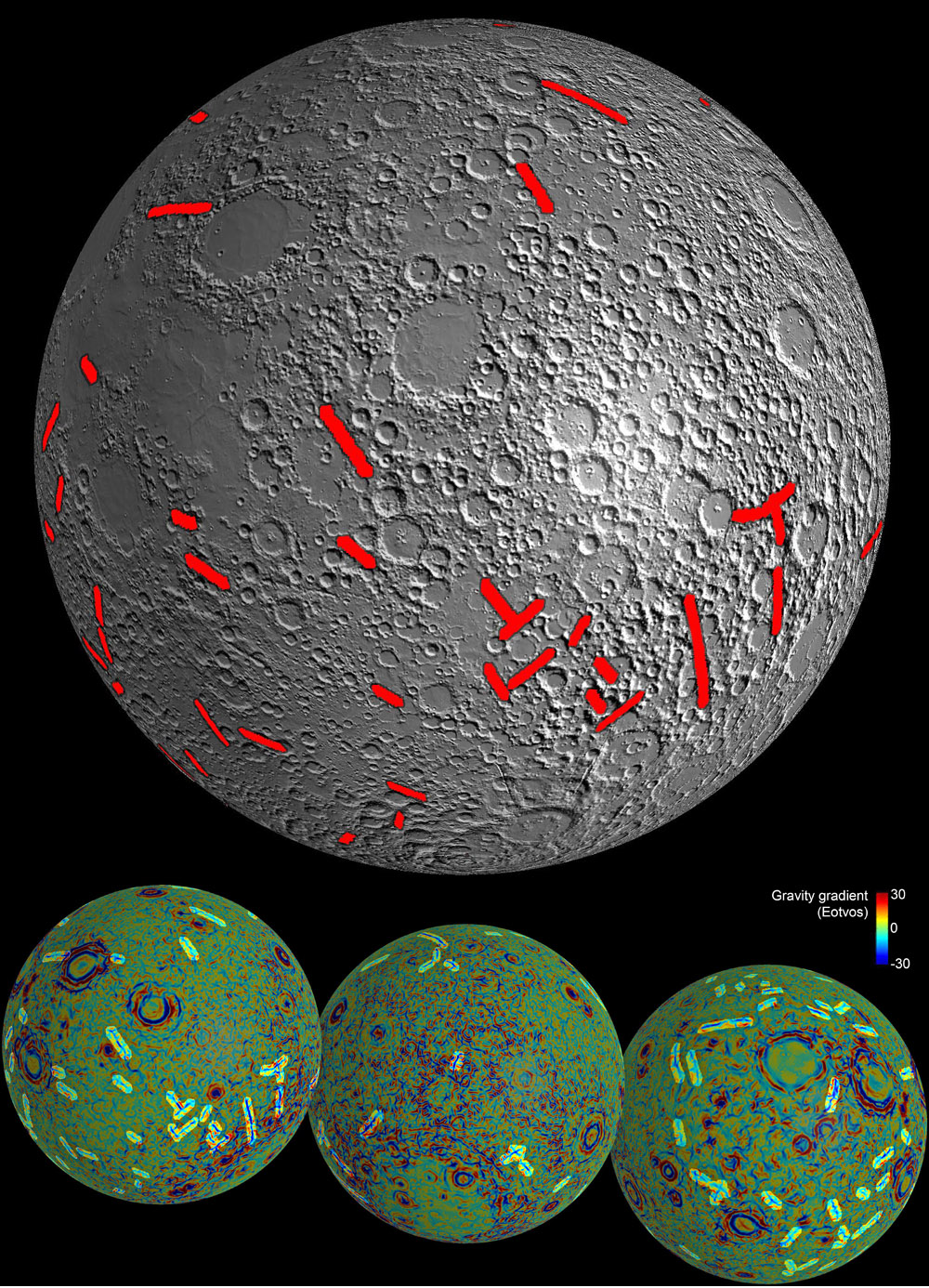December 8, 2012
Gravity Worms

image by NASA/JPL-Caltech/CSM
Like every spacecraft mission that is an improved version of previous ones GRAIL was expected to refine gravity and crustal maps of the Moon and it has. But what is most exciting with all missions are the totally unexpected findings, and the most unique, thus far, from GRAIL is the discovery of deep linear gravity anomalies as shown at top in red (derived from the bottom left map). The bottom three balls show gravity gradients, mapping out places where the pull of gravity changes quickly over a small geographical area. Red lines are where gravity rapidly increases and blue where it decreases. The biggest gradients occur where large mascons and defcons (mass concentrations and mass deficiency concentrations) exist, which is around the edges of basins. So you can see in the bottom maps red and blue circles around South Pole - Aitken, Orientale, Imbrium and other basins. All the other squiggley lines are smaller anomalies, perhaps associated with craters. GRAIL scientists recognized that some of the linear gradient anomalies (here called worms) aren't associated with visible topography and in fact seem to be cut by even old landforms - the prize example is a worm that seems to be interupted by the ancient Crisium impact basin. For some reason only the west side of the Crisium worm is shown on the top image but both pieces are depicted on the bottom left ball near top left. The scientists propose that these long worms are dikes - sheets of magma intruded into the lower crust early in lunar history. Dikes intrude when there is an expansive tectonic environment, not a compressive one. So the proposal is that originally the lunar interior was cool but then was heated up causing expansion of the Moon's diameter by about 10 km. This led to the intrusion of dikes hundreds of kilometers long. Now some of these worms do look like real features but others don't seem different from many other wormlets that aren't identified as dikes. It will be interesting to see how this interpretation matures. I would imagine that these ancient dikes reached the surface and led to massive lava flows, perhaps accounting for putative pre-mare volcansim. As a side note, I wonder why the intensity (the depth of blue and red colors) of the worms on the left globe (centered at 90°E) is so much less than on the rest of the Moon.
Chuck Wood
Yesterday's LPOD: Spider Webs
Tomorrow's LPOD: Colorful Grimaldi
COMMENTS?
Register, Log in, and join in the comments.



